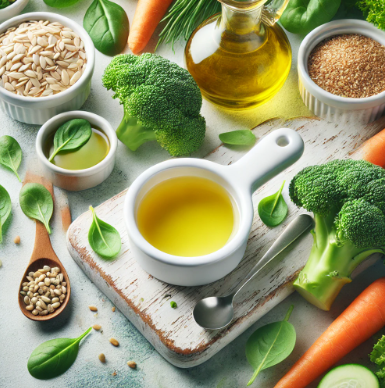Oil is a staple in many kitchens, used to bring flavors to life in various dishes. But while oil can enhance taste, excessive consumption carries health risks, especially when it comes to heart health. Understanding how much oil is ideal for daily use and learning some helpful tips for minimizing usage can greatly benefit overall wellness. Here’s how you can monitor and optimize your oil intake to maintain a balanced, heart-healthy diet.
1. Understanding Healthy Oil Intake For an Adult
Daily Limit Recommendations
For a healthy adult, it’s recommended to keep daily oil intake to about 3 to 4 teaspoons, which is roughly 20 ml. This amounts to around 500-600 ml per month. Sticking to this amount ensures you get the needed fats without the risks associated with excess.
Why Limit Oil?
Excessive oil consumption can lead to several health concerns:
- Increased cholesterol levels: Saturated fats, often found in many oils, can raise bad cholesterol (LDL), contributing to artery blockage.
- Weight gain: Oil is calorie-dense, and overuse can quickly add unnecessary calories, resulting in weight gain.
- Heart health issues: High cholesterol and weight gain increase the risk of heart disease, making moderation key to maintaining cardiovascular health.
2. Calculating and Monitoring Oil Usage
Keep a Measured Stock
One of the easiest ways to prevent overuse is by calculating and storing the ideal amount of oil in the kitchen for the month. This visual reminder can help limit daily usage and create a habit of mindful consumption.
Monitor Cooking Habits
If you have someone else preparing meals, communicate with them about limiting oil to the recommended amount. Educate family members or cooks on why this practice is important for overall health and well-being. Encourage them to explore methods to use less oil and try healthier alternatives.
3. Healthy Cooking Tips with Minimal Oil
Use Non-Stick Cookware
Non-stick pans and skillets require much less oil compared to regular cookware. This not only helps cut back on oil but also keeps food from sticking, making cooking and cleanup easier.
Experiment with Other Cooking Methods
Instead of relying solely on frying or sautéing, try methods like steaming, grilling, or baking. These techniques need little to no oil, preserve the nutrients in the food, and offer delicious flavor profiles.
Try Oil Sprays or Brushes
Oil sprays or brushes help apply a thin, even layer of oil to food, reducing consumption. A spray bottle also makes it easier to control the amount of oil used, especially for salads or roasting vegetables.
4. Choosing Healthier Oils
Select Heart-Friendly Oils
The type of oil matters as much as the amount. Opt for oils high in unsaturated fats, which are known to support heart health. Olive oil, avocado oil, and coconut oil are great options for daily cooking, as they contain beneficial fats that are better suited for a balanced diet.
Rotate Oils for a Balanced Diet
Different oils contain different types of fats and nutrients, so rotating them allows your body to benefit from a range of healthy fats. Try incorporating variety in your oil choices, such as using olive oil for salads, coconut oil for certain sautéed dishes, and avocado oil for roasting.
Conclusion
Being mindful of your oil intake can have lasting positive effects on your health. These simple yet impactful adjustments – from using non-stick cookware to calculating monthly oil stock – allow you to maintain flavor in your meals while protecting heart health. Small changes like these can set the foundation for a healthier lifestyle, ensuring that oil serves its purpose as an enhancer, not a health hazard.
In case of any related query related to nutrition or weight management book an appointment with Dt. Silky Mahajan .You can also send us a mail at info@foodsandnutrition.in or call on 7829999400. Follow us on facebook & instagram for latest updates.











